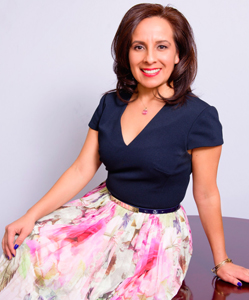 Many people miss out on excellent writing, because they fear the supposed “dryness” of nonfiction works. While some nonfiction writing is indeed boring, the majority of it is interesting and informative. The types of nonfiction writing can vary from one extreme to another. Non-fiction is a genre that includes topics that are extremely technical in nature but can also cover material that is not so technical and taps more into using fiction writing skills that uses plots and characters.
Many people miss out on excellent writing, because they fear the supposed “dryness” of nonfiction works. While some nonfiction writing is indeed boring, the majority of it is interesting and informative. The types of nonfiction writing can vary from one extreme to another. Non-fiction is a genre that includes topics that are extremely technical in nature but can also cover material that is not so technical and taps more into using fiction writing skills that uses plots and characters.
Non-fiction writing comes in many forms as there are writers. Each of us has our own style, voice, and method when writing. What works for one author may not work for another. But what brings writers together is usually the enthusiasm and interest in a particular subject and the need to share this with a reader to evoke some kind of emotion or response; whether the writing is of a technical nature or not.
For any type of writing, non-fiction or fiction, clutter should be avoided. However, it is natural for writers to incorporate a lot of “fluff” into their writing because as people we like to feel important; thereby, thinking that if we add more words to our written work it adds credibility and significance. In fact, this is the opposite. Streamlining our written work to the minimum tends to make writers work towards using the most effective words possible. It is this streamlining that drives us to use the most descriptive words possible and allows us to bring a reader into our created world; thus achieving our goal of writing for the reader.
Nonfiction writing can be divided up into dozens of diverse categories. Here are just a few:
Biography. If you are trying to get a child to read nonfiction, there is no better way to do so than to encourage him or her to pick up a biography. Often, biographies read just like novels, with a clear plot and intriguing characters. There are biographies about all kinds of people, from famous politicians and entertainers to ordinary people that have done some extraordinary things.
Autobiography. This is where the subject is also the writer, fall under the umbrella of this category.
Memoir. The terms memoir and autobiography are very alike, in that the author writes about him or herself. However, a memoir’s structure is far different from that of an autobiography. In an autobiography, the author tells a cradle to old age story, while a memoir typically focuses on a single important experience. Memoirs aren’t always told in chronological time, leaving certain flexibility in the structure of the book.
Textbooks. If you have had a formal education, you have most likely spent plenty of time reading textbooks. Textbooks are largely responsible for the unfortunate stereotype regarding the dullness of nonfiction. These books are meant to educate, but in fulfilling that role, they sometimes end up lacking the passion seen in other types of nonfiction. Still, textbooks are very adept at meeting their main purpose, which is providing information in a straightforward manner.
Science Books. The science book is written to provide understanding of the natural world around us and how this world works. Science is about using the observable physical evidence that surrounds us to get an understanding of how our world functions. It is capturing that knowledge through the observation of natural phenomena or through experimentation and then writing it for others to read. While its primary focus is to educate and provide knowledge, a science book can still be written in a way that will capture your audience. A writer needs to be very talented in order to create this type of written material that is accurate and yet interesting and will inform the general population.
Creative Nonfiction. Like other forms of nonfiction, creative nonfiction is rooted in fact. The writers need to conduct plenty of research before they are ready to put together a book or essay. The main difference between creative nonfiction and other genres is that in creative nonfiction, the work is written with an emphasis on literary style. Reading a work of creative nonfiction may feel a lot like reading a novel, except for the fact that everything in the creative nonfiction piece actually happened.
Overall Goal of the Writer
Because there are many types of non-fiction categories and works throughout our world, there are no hard and fast rules to providing information to the general reader. A writer should, of course, always keep a publisher’s guideline and mission statement in sight when writing, but it is just as important to ensure that you remain true to your overall purpose. In the end, it is about connecting with your reader whatever the style, material, or category selected.




